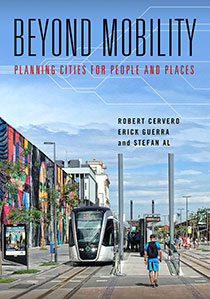"Updates the argument that planning should focus less on motorized movement and more on the 'needs and aspirations of people and the places they want to go.'"
Planning
"A remarkable contribution to the literature that establishes a comprehensive perspective on community building, built environment design, and economic development. The chapters in this volume establish a new urban planning and design framework to meet the needs of the new century."
Journal of Planning Education and Research
"Overall, this book explains conflicts and challenges of transportation and land use planning and provides practical examples for overcoming these challenges. Beyond Mobility is a worthy addition for transportation and urban planning and should prove useful for researchers as well as practitioners.The practical cases provide a pool that can be used for teaching transportation and land use planning courses."
Journal of Urban Affairs
"Including color illustrations and a few graphics to illustrate critical points, this fantastic book should be required reading."
CHOICE
"How do we plan our cities for people instead of cars? This book shows how urban designers, transportation engineers, and policy makers can work together to connect and create places that people want to be in while assuring that they can travel around without a fuss. The authors link theory with practice, backing up their argument with ample data and real-life case studies. This veritable tour de force will be an inspiration for anyone who cares about the future of cities."
Jan Gehl, Founder and Senior Advisor of Gehl Architects
"Beyond Mobility: Planning Cities for People and Places does a great job of explaining each of these trends and urban issues at large. It’s very easy to read and will fill you with plenty of urbanist dinner table conversation!"
Spacing Vancouver
"Robert Cervero and his colleagues have produced what may become the most influential book of this generation on land use and transportation, providing an elegant conceptual framework, excellent case studies, and cutting-edge thinking."
Reid Ewing, Chair and Professor of the City & Metropolitan Planning Program at the University of Utah
"With a grand vision, this book clearly articulates the crucial importance of transportation in creating better communities, environments, and economies. Beyond Mobility is a must-read for urban geographers, planners, designers, and engineers seeking ways to make future cities more sustainable."
Becky Loo, Professor of Geography and Director of the Institute of Transport Studies at the University of Hong Kong

